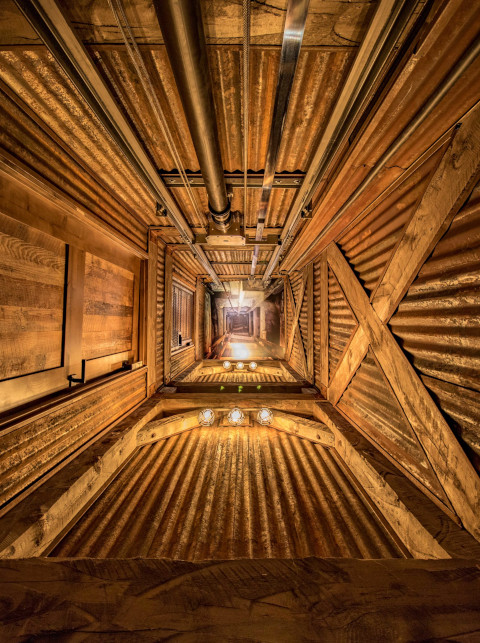Captivating Traps in 5th edition Dungeons & Dragons are more than just damage delivery gimmicks. A great trap communicates something about who created it, the danger you face, and engages the environment in exciting ways. This is an example of trap design that creates an environmental challenge with Progressive Failures and Rising Tension that engages character skills. I used this trap in my campaign last night to great effect and wanted to share it with the community if it’s useful for you as well.

Elevator Boulder Trap
- CR: 4
- DC: 12
- Damage: 4d6
- Secondary Challenge:
- Athletics (Strength) or fall
- 4d6 fall damage
Description
A wooden framed elevator descends one hundred feed down into the caverns below. The elevator itself moves via magical gears that make it climb or descent through use of operating leavers in the elevator at the entries and exits. If the elevator is put in motion without pulling a secondary leaver, the trap is armed.
When the elevator reaches the half way point of this one-hundred-foot shaft, it trips a lever that drops a boulder from a cabinet in a side wall near the top of the shaft. The boulder plummets down and smashes through the elevator.
Using this Trap
Players may notice the trap with an Intelligence (Investigate) check at the Trap DC. An Intelligence (Perception) check will allow them to determine the right sequence of levers to disarm the trap. Proficiency and use of Thieves Tools grant advantage on this roll.
If the trap is triggered, describe the sound of something coming lose from the wall above them and the light suddenly being blocked. If a player immediately declares they are moving to the side, give them advantage on the damage roll and subsequent athletics check. Players take 4d6 bludgeoning damage from the boulder crashing into the elevator, or half as much on a successful Dex Save.
Characters must then make a Strength (Athletics) check against the Trap DC to jump onto the elevator scaffolding. They may make this roll at advantage if they moved quickly to the side during the description. Failing this check means the character falls the rest of the way down the shaft, taking 4d6 bludgeoning damage.
Characters who holding onto the scaffolding may climb down at 15 feet per round without rolling further. They can move up to their full movement speed if they succeed at a DC 15 Strength (Athletics) Check. (Say to reach any unconscious characters below).
Real World Use
I used this in my heavily modified version of Black Swords from Icewind Dale – Rime of the Frostmaiden. It worked wonderfully from the DMs point of view; it was a grand challenge. One of the players picked up on the trap being triggered and announced they were moving to the side. Two players ended up hanging onto the scaffolding, two players fell the rest of the way and were brought to zero hit points. The conscious players moved as fast as they could to get the bottom to help the players making Death saves. Overall, it was tense, hit the players hard and shook them up so it achieved the effect that I wanted of bringing the tension up and using some skills in an exciting way. A saving grace of the trap design is not having enemies at the bottom, with the elevator broken the players correctly surmised they could take a short rest and recover.